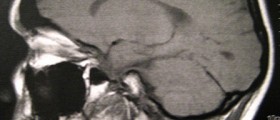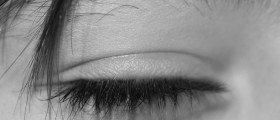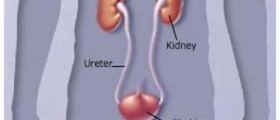The septum pellucidum is a thin, triangle shaped membrane which is located in the midline of the brain. It separates the horns of the right and left ventricles of this organ.
The clinical significance
The presentation of SOD can be divided into signs and symptoms which are caused due to the specific mentioned areas being affected.

These are as follows:
- Optic nerve hypoplasia - this results in issues such as nystagmus (involuntary side-to-side eye movements), which usually appears by the time the child is 1-8 months old, and a smaller optic disk. Visual impairment can vary from normal vision to complete blindness. The severity of the visual impairment is difficult to predict in infancy but the younger the child is, when visual disturbances occur, then the worse the visual impairment is later on in life.
- Pituitary deficiencies - this condition can affect either the anterior or posterior pituitary gland or even both. There can be growth hormone deficiency which can result in hypoglycaemia (low blood sugar) and micropenis in boys. Anti-diuretic hormone deficiency can result in increased urination which may lead to dehydration. Jaundice can also occur and this issue seems to resolve a few weeks after birth when hormone replacement is started.
- Absent septum pallucidum - the brain is affected but these effects are variable. Convulsions may occur and the child's intellectual outcome is difficult to predict in infancy.
Causes
The absence of the septum pallucidum can occur due to a couple of issues, although there is no single known cause.
The risk factors which could be associated with the development of septo-optic dysplasia (SOD) may include the following:
- Genetic mutations of specific genes.
- Young maternal age.
- Valproate toxicity.
Prognosis
The prognosis of SOD and, specifically, a missing septum pallucidum will vary between affected individuals and will depend on the severity and the presence of symptoms.
Management
The management of SOD is done by addressing the areas which are being affected by this condition. The treatment is therefore symptomatic.
Pituitary deficiencies are managed by hormone replacement therapies. The vision related issues, in general, are not treatable but visual aids may benefit the patient.
Physical, speech and occupational therapies may need to be incorporated for these patients.
Further research
The National Institute of Neurological Disorders and Stroke (NINDS) conducts and supports neurogenetic research focusing on studying and identifying the genes which are associated with the normal development of the brain.
The information which is gathered from these studies then helps to provide the foundation of determining how embryonic development can be negatively affected and how gene mutations occur.
This will eventually help researchers understand how disorders such as SOD occur and may result in further research into possibly directly treating this disorder.




-In-Infants-And-Older-Children_f_280x120.jpg)











-And-Children-16-Warning-Signs-And-Symptoms_f_280x120.jpg)